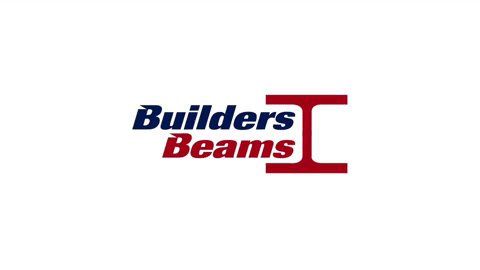We’re often asked about the differences between hot rolled steel and cold rolled steel. Here’s what you need to know!
All of ours UB, UC, PFC, RSA, flats are hot rolled whereas SHS, CHS, RHS that we provide are cold rolled structural steel. Sheets can also be produced in cold rolled option but they are only available on special request.
Hot rolled steel
Hot rolled steel is easier to make, to shape and form. It has its source in a mill process involving rolling the steel at high temperature. It starts from a piece of still billet which is heated up 1700 degrees Fahrenheit (926° Celsius) and then the steel is rolled through the mill into the particular shape. The whole process is done at high temperature and at the end is being cooled down. The cooling down may cause the steel to shrink and therefore there is less control over the final size and shape.
Hot rolled steel is commonly used when precise shapes and tolerances are not essential.
Advantages
– Easier to make: heat it up, push through, cool down and that’s it!
– Cheaper than cold rolled
– Hot rolled steel is allowed to cool at room temperature and it’s free from internal stresses that can arise from quenching or work-hardening processes
– Most popular shapes are hot-rolled (UC, UB, SHS, RHS, PFC, flats etc.)
Disadvantages
– dimensional imperfections caused by heating (expanding) and cooling down (shrink, warpage)
– rough texture on a surface, need to be removed and buffed before painting
– Slight distortions
Cold rolled steel
While hot rolled steel is heated then cooled, cold rolled steel is heated and cooled at the room temperature and then rolled after again. The steel is processed further in cold reduction mills, where the material is cooled (at the room temperature) followed by forming the material by either press-braking or cold roll forming to achieve the desired shape.
The term “rolled” is often used just to describe a range of finishing processes such as turning, grinding, and polishing, each of which modifies existing hot rolled stock into a more refined product. Technically, “cold rolled” applies only to sheets that undergo compression between rollers. But forms like bars or tubes are “drawn” not rolled. Hot rolled bars and tubes once cooled, are processed into what we call “cold finished” tubes and bars.
Advantages
– accurate shape (consistent and straight)
– a wider range of surface finishes
– a smooth and shinier surface
– bars are true and square and have well-defined edges and corners
– Tubes have better concentric uniformity and straightness.
Disadvantages
– more expensive
– fewer shapes available cold-rolled (sheets, box section shapes: CHS, SHS, RHS)
– additional treatments can create internal stress within the material; this can cause unpredictable warping if the steel is not stress relieved prior to cutting, grinding, or welding.
How to differentiate them?
Hot rolled steel comes with a scaly surface, slightly rounded edges and corners and the surface is non-oily. Cold rolled steel has an oily or greasy finish, very smooth surface, and very sharp edges.
Categories
Archives
- April 2024 (5)
- March 2024 (2)
- February 2024 (1)
- January 2024 (3)
- December 2023 (2)
- November 2023 (1)
- September 2023 (4)
- August 2023 (3)
- July 2023 (1)
- June 2023 (7)
- May 2023 (2)
- April 2023 (14)
- March 2023 (15)
- February 2023 (7)
- January 2023 (6)
- December 2022 (5)
- November 2022 (1)
- October 2022 (4)
- September 2022 (3)
- August 2022 (1)
- July 2022 (2)
- June 2022 (2)
- April 2022 (4)
- March 2022 (1)
- February 2022 (1)
- December 2021 (3)
- March 2021 (2)
- October 2020 (1)
- September 2020 (1)
- July 2020 (1)
- June 2020 (1)
- May 2020 (2)
- April 2020 (2)
- March 2020 (3)
- February 2020 (2)
- January 2020 (1)
- December 2019 (2)
- November 2019 (1)
- October 2019 (1)
- September 2019 (3)
- August 2019 (1)
- July 2019 (4)
- June 2019 (4)
- May 2019 (1)
- April 2019 (4)
- March 2019 (2)
- February 2019 (4)
- January 2019 (4)
- December 2018 (4)
- November 2018 (4)
- October 2018 (5)
- September 2018 (6)



